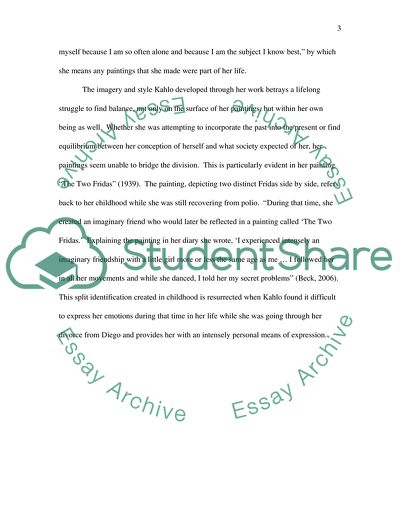Cite this document
(“Frida Kahlo's Artwork Essay Example | Topics and Well Written Essays - 1500 words”, n.d.)
Frida Kahlo's Artwork Essay Example | Topics and Well Written Essays - 1500 words. Retrieved from https://studentshare.org/visual-arts-film-studies/1544489-frida-kahlos-artwork
Frida Kahlo's Artwork Essay Example | Topics and Well Written Essays - 1500 words. Retrieved from https://studentshare.org/visual-arts-film-studies/1544489-frida-kahlos-artwork
(Frida Kahlo'S Artwork Essay Example | Topics and Well Written Essays - 1500 Words)
Frida Kahlo'S Artwork Essay Example | Topics and Well Written Essays - 1500 Words. https://studentshare.org/visual-arts-film-studies/1544489-frida-kahlos-artwork.
Frida Kahlo'S Artwork Essay Example | Topics and Well Written Essays - 1500 Words. https://studentshare.org/visual-arts-film-studies/1544489-frida-kahlos-artwork.
“Frida Kahlo'S Artwork Essay Example | Topics and Well Written Essays - 1500 Words”, n.d. https://studentshare.org/visual-arts-film-studies/1544489-frida-kahlos-artwork.


